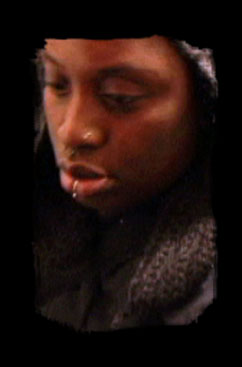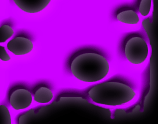|

I culled the term "ghetto sublime" from Christopher Smith's article, “I Don’t Like to Dream about Getting Paid: Representations of Social Mobility and the Emergence of the
Hip-Hop Mogul” (Duke University Press), where it was buried in a fuckload of four-syllable vocabulary words. In a recent
East Bay Express review of Jinicydle's album, Ghetto Tactics, I introduced the term as such:
“Sublime” is something so beautiful that it ruptures
all your internal systems of organization, and “ghetto” is self-explanatory. “Ghetto sublime,” then,
is the really-realest image of “ghetto” fathomable –a ghetto that’s keeping is so real, you have to wonder if it’s for real. To truly reach
the heights of ghetto sublime, a rapper would have to dish out the most extreme homidal fantasy imaginable, and exceed all
expectations of the distanced listener/voyeur. It would have to be someone so absolutely over-the-top gangsta, he would make
ODB look like a pansy. A veritably ghetto sublime rapper would probably have to bust out with a Tech 9 and shoot somebody,
while slapping a ho, in a bucket with 20 inch rims, flossing his grill, and pounding the most hardcore gangster beat on the
planet.
So yeah, "ghetto sublime" is an oxymoron,
no doubt. But I think that in order to speak intelligently about hip hop, we need to be willing to embrace contradictions.
It's important to recognize that a lot of pop culture conceptions of the ghetto -and by extension, hip hop- are more
about black buck fears than anything else. But it's equally important to see through the "if only we could make it conscious"
hustle. A friend said there needs to be more music in journalism and less music journalism: Dovetailing off of that, I encourage
music writers to stretch the limits of their medium, rather than try to tame the music with conventions of morality,
or political correctness.
Hip hop journalism becomes art when we
reconcile the personal dimensions of the genre -those artists who seduce us with the immediacy of their beats, the
creativity of their rhymes, and the characters they inhabit- with social preoccupations like misogyny, commercialism, the
illusion and failure of integration, and the disparities of urban life. If we're able to sidestep the stereotypes that
generate such unabashedly schlocky products as Ghetto-opoly and Nelly's Pimp Juice, we'll find moments when the ghetto produces something
unexpected, and beautiful: Jinicydle showing he's brave enough to be vulnerable in the rap "Held Back," Biggie Smalls looping
metaphors for sex, violence, and an intensely personal dark side, or Mak Diddy opening up a space for femininity in
gangsta rap.
The best rappers not only push "ghetto," to
the next level of scandalousness --they also use their individual experiences to talk about the human condition. Dorothy Parker
once said that a good story is "both a window into a segment of the human experience, and an interpretive record of it," and
the same is true, of hip hop. When a rapper -or any writer, for that matter- spits his lyrics with craft, and intelligence
-so that his stories aren't mere philosophical treatises, illustrations, or rhetorical flourishes- he creates a ghetto that's
suitably sublime.
Peace.
Rachel Swan
|

